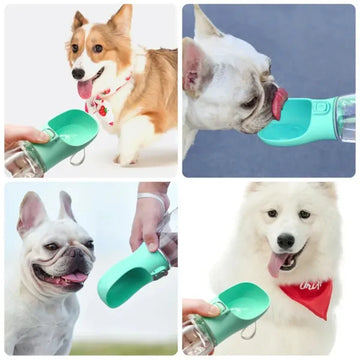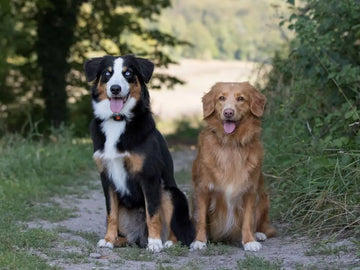Bringing a puppy into your home is an exciting adventure, but it comes with important responsibilities, particularly when it comes to keeping them hydrated. Puppies, like all dogs, need constant access to fresh water, but their hydration needs can vary greatly based on their age, activity level, and environment. It’s essential to have the right dog supplies, such as bowls and water bottles, to ensure your puppy stays hydrated. Understanding how often to provide water and the best practices to encourage drinking is crucial for your puppy's health and well-being.
Understanding Puppy Hydration Needs
Puppies are particularly susceptible to dehydration due to their developing bodies. It’s critical to provide them with constant access to clean, fresh water. Unlike adult dogs, puppies may not instinctively regulate their water intake, which can lead to either dehydration or over-drinking. Here’s a detailed breakdown of their water needs based on age:
Under 8 Weeks Old: At this age, puppies primarily rely on their mother's milk for hydration and nutrition. If they are weaned, start introducing small amounts of water, ideally offering it two to three times a day. Make sure to monitor how much they drink to prevent any digestive issues.
8 to 12 Weeks Old: During this transitional phase, puppies begin to eat solid food. They should have access to water four to six times a day. It's important to observe their drinking habits to ensure they are hydrated, especially after meals or play.
3 to 6 Months Old: As your puppy grows, their water needs will increase. Aim to provide water three to four times a day and encourage them to drink after meals and play sessions. This is also a good time to start teaching them where to find their water bowl.
6 Months and Older: Once your puppy reaches six months, they can typically have free access to water throughout the day, similar to adult dogs. Make sure they have water available after meals, during play, and following walks.
Signs of Dehydration
Recognizing the signs of dehydration in puppies is vital. Common symptoms may include:
Dry Gums: Check your puppy’s gums; they should be moist and pink. Dry, sticky gums are a warning sign of dehydration.
Lethargy: If your puppy seems unusually tired or less active, it may indicate they need more water.
Excessive Panting: While some panting is normal, excessive panting can indicate overheating or dehydration.
If you notice any of these signs, provide water immediately and consult a veterinarian if they do not improve.
Tips for Encouraging Hydration
Getting your puppy to drink enough water can sometimes be a challenge. Here are some effective strategies:
Use a Portable Dog Water Bottle: Investing in a portable dog water bottle is a great way to keep your puppy hydrated, especially during walks or trips. These bottles are designed for convenience, making it easy to provide fresh water whenever needed.
Create a Routine: Establishing a schedule for feeding and watering your puppy can help them learn when to expect water. Offer water after meals, playtime, and walks to reinforce hydration habits.
Monitor Water Intake: Keeping track of how much your puppy drinks can provide insights into their hydration needs. If you notice a decrease in their water intake, consider adjusting their access to water.
Managing Water Intake
While it’s crucial for puppies to have access to water, managing their intake can also be necessary, especially during potty training. Here’s how to find a balance:
Limit Water Before Bedtime: To assist with nighttime potty training, consider reducing water intake an hour or two before bedtime. This approach can help minimize accidents overnight while ensuring your puppy stays hydrated during the day.
Adjust for Activity Levels: Active puppies will require more water. Be proactive in offering water after playtime, training sessions, or outdoor adventures to ensure they don’t become dehydrated.
Best Practices for Providing Water
To ensure your puppy stays hydrated, consider these best practices:
Clean Water Bowls: Always provide clean water in a fresh bowl. Puppies can be messy, so check their water frequently and refill it as needed. Opt for stainless steel bowls, which are easier to clean and more durable.
Use Best Dog Feeders: Incorporating the best dog feeders into your puppy’s feeding routine can make a significant difference. Some feeders come equipped with built-in water dispensers, ensuring your puppy has access to both food and water at mealtimes.
Hydration Through Food: If your puppy eats wet food, this can contribute to their overall water intake. However, it’s still essential to ensure they have access to fresh water at all times, regardless of their diet.
Conclusion
Proper hydration is vital for your puppy’s health and development. Puppies require regular access to clean water, with their needs varying by age and activity level. Utilizing tools like a portable dog water bottle can facilitate hydration during outings, while maintaining a consistent schedule will help your puppy understand when to drink.
Keep an eye on their water intake and be mindful of signs of dehydration. By implementing the right practices, you can ensure your puppy remains hydrated and happy as they grow, setting the foundation for a healthy life ahead. Remember, a well-hydrated puppy is a happy puppy!










